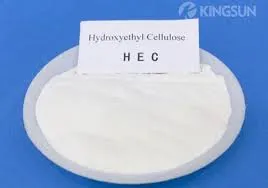
Sep . 08, 2024 07:48 Back to list
HPMC Grades - Comprehensive Guide to Hydroxypropyl Methylcellulose Applications
Understanding HPMC Grades An Overview
Hydroxypropyl Methylcellulose (HPMC) is a widely utilized cellulose ether that plays a crucial role in various industries, ranging from pharmaceuticals to food and cosmetics. The versatility of HPMC can be attributed to its unique properties and the different grades available for specific applications. This article aims to provide an insight into HPMC grades, their characteristics, and their applications.
Understanding HPMC Grades An Overview
HPMC grades can be categorized based on their viscosity, molecular weight, and functional groups. The viscosity of HPMC is influenced by the degree of substitution of the hydroxypropyl and methoxy groups, which affects its solubility and thickening ability. Lower viscosity grades are typically used in applications where a quick dissolution is required, such as in certain food products and beverages. Conversely, high-viscosity grades are preferred in preparations that require sustained release or enhanced gel formation, making them suitable for pharmaceutical applications.
hpmc grades pdf

In the pharmaceutical industry, different HPMC grades are utilized for various drug delivery systems. For instance, HPMC K100M is commonly used in sustained-release formulations due to its high viscosity and gel-forming properties. This grade is effective in controlling the release rates of drugs, allowing for prolonged therapeutic effects. On the other hand, HPMC E15 is frequently employed in immediate-release tablets, where its lower viscosity ensures rapid disintegration and release of the active ingredient.
In addition to pharmaceuticals, HPMC is extensively used in the food industry. It acts as a thickener and stabilizer in products like sauces, dressings, and ice cream, providing desirable textures and preventing ingredient separation. Moreover, its ability to retain moisture makes it a valuable ingredient in gluten-free products, enhancing the texture and shelf-life.
The cosmetic industry also benefits from HPMC's properties. It is used in various formulations, including lotions, creams, and shampoos, where it functions as a thickening agent and helps improve the stability of emulsions. HPMC contributes to the sensory feel of cosmetic products, making them more appealing to consumers.
In conclusion, the diverse grades of HPMC are tailored to meet the specific requirements of various industries. Its unique properties make it a valuable ingredient in pharmaceuticals, food, and cosmetics. Understanding the different grades of HPMC and their applications allows manufacturers to select the most appropriate grade for their products, ensuring optimal performance and consumer satisfaction. As research and development continue, we can expect to see even more innovative uses for HPMC in the future.
-
Versatile Hpmc Uses in Different Industries
NewsJun.19,2025
-
Redispersible Powder's Role in Enhancing Durability of Construction Products
NewsJun.19,2025
-
Hydroxyethyl Cellulose Applications Driving Green Industrial Processes
NewsJun.19,2025
-
Exploring Different Redispersible Polymer Powder
NewsJun.19,2025
-
Choosing the Right Mortar Bonding Agent
NewsJun.19,2025
-
Applications and Significance of China Hpmc in Modern Industries
NewsJun.19,2025







